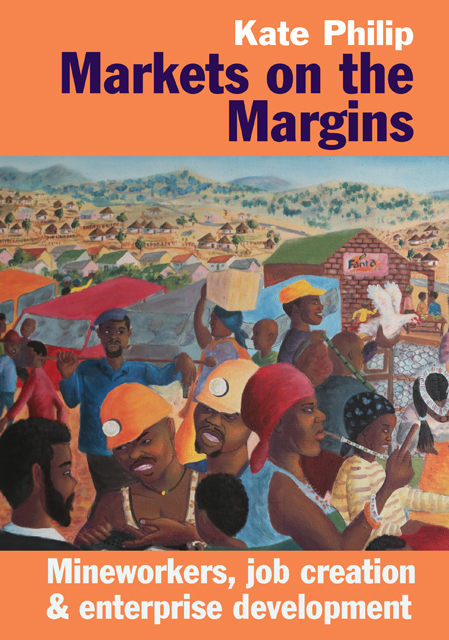Book contents
- Frontmatter
- Contents
- List of Illustrations
- Preface
- Acknowledgements
- Abbreviations
- 1 Introduction: Setting the scene
- 2 The 1987 Mineworkers Strike
- 3 Conflict in the Transkei
- 4 Power Struggles in Lesotho
- 5 Co-ops Capture the Imagination
- 6 The NUM Co-op Programme
- 7 Challenges of Democratic Ownership & Control
- 8 Rethinking Degeneration in Co-op Theory
- 9 The Mineworkers Development Agency’s Development Centre Strategy
- 10 Small Enterprise: In the shadow of the core economy
- 11 A New Enterprise Development Paradigm
- 12 Market Development – or a New ‘Anti-Politics Machine’?
- 13 Breaking into Higher-value Markets in the Craft Sector
- 14 Marula: Product innovation & value chains
- 15 Implications for Enterprise Development Strategy
- 16 If Markets are Social Constructs, how Might we Construct them Differently?
- Select Bibliography
- Index
15 - Implications for Enterprise Development Strategy
Published online by Cambridge University Press: 20 January 2023
- Frontmatter
- Contents
- List of Illustrations
- Preface
- Acknowledgements
- Abbreviations
- 1 Introduction: Setting the scene
- 2 The 1987 Mineworkers Strike
- 3 Conflict in the Transkei
- 4 Power Struggles in Lesotho
- 5 Co-ops Capture the Imagination
- 6 The NUM Co-op Programme
- 7 Challenges of Democratic Ownership & Control
- 8 Rethinking Degeneration in Co-op Theory
- 9 The Mineworkers Development Agency’s Development Centre Strategy
- 10 Small Enterprise: In the shadow of the core economy
- 11 A New Enterprise Development Paradigm
- 12 Market Development – or a New ‘Anti-Politics Machine’?
- 13 Breaking into Higher-value Markets in the Craft Sector
- 14 Marula: Product innovation & value chains
- 15 Implications for Enterprise Development Strategy
- 16 If Markets are Social Constructs, how Might we Construct them Differently?
- Select Bibliography
- Index
Summary
The central focus of this book has been on the quest to build effective strategies to support the development of enterprise on the margins, in South Africa’s mine-labour-sending areas, to create jobs and to reduce poverty. Across fourteen years and several different phases of the Mineworkers Development Agency (MDA)’s programme, in a period that also straddled South Africa’s transition to democracy, it is sobering just how marginal enterprise on the margins remained and how miserably low the returns usually were. Certainly, the ball can (and no doubt will) be thrown into our own court: in every phase, there was learning to do, mistakes made, strategic errors of omission and commission. Yet more than a decade later, surveying the field, a few things are striking. Firstly, many of the lessons we learned in this process remain very relevant to small enterprise (SE) development strategy in marginal contexts today. Secondly, it’s clear that, unique as MDA’s experience may have been, strategies promoting enterprise development in South Africa still often find it hard to achieve meaningful reductions in poverty.
At one level, this should come as no surprise. Yet the expectation that poor people can and will be able to self-employ their way out of poverty at significant scale – self-funded through micro-loans at commercial interest rates – remains deeply embedded in the policy discourse and the public imagination. Certainly, when the story outlined here began with the dismissal of forty thousand mineworkers, the expectation existed even in NUM that enterprise development activity – co-ops in particular – offered a feasible pathway back into employment for a significant proportion of this group. In the face of unemployment figures that have remained stubbornly high in the decades since, it really matters if the default assumptions about what it will take to change this are flawed.
As described in Chapter 10, strategies of enterprise development in poor and marginalised communities have had a tendency to underestimate the economic implications of South Africa’s high levels of structural inequality, including in particular the structure of the economy, the impacts of concentration and also of spatial inequality. The structure of the South African economy certainly also impacted on the wider region in which MDA’s programmes operated.
- Type
- Chapter
- Information
- Markets on the MarginsMineworkers, Job Creation and Enterprise Development, pp. 185 - 200Publisher: Boydell & BrewerPrint publication year: 2018

